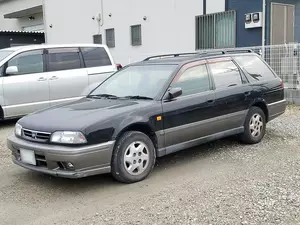
| Vehicle | Precise engine size | Difference from world average | Engine size to consumption ratio | Horsepower from 1 L | Engine size to 100 kg of weight |
|---|---|---|---|---|---|
| GT4 2.0i 16V |
2 L (1998 cc) |
14.8% smaller | - | 110 hp from 1 L | 133 cc to 100 kg |
| 2.0i 16V |
2 L (1998 cc) |
14.8% smaller | - | 73 hp from 1 L | 143 cc to 100 kg |
| 1.8i 16V |
1.77 L (1769 cc) |
24.6% smaller | 51 cc to 1 mpg | 71 hp from 1 L | 136 cc to 100 kg |
| 2.0d 16V |
1.97 L (1973 cc) |
15.9% smaller | - | 46 hp from 1 L | 141 cc to 100 kg |
| Vehicle | GT4 2.0i 16V |
|---|---|
| Precise engine size | 2 L (1998 cc) |
| Difference from world average | 14.8 smaller |
| Engine size to consumption ratio | - |
| Horsepower from 1 L | 110 hp from 1 L |
| Engine size to 100 kg of weight | 133 cc to 100 kg |
| Vehicle | 2.0i 16V |
| Precise engine size | 2 L (1998 cc) |
| Difference from world average | 14.8 smaller |
| Engine size to consumption ratio | - |
| Horsepower from 1 L | 73 hp from 1 L |
| Engine size to 100 kg of weight | 143 cc to 100 kg |
| Vehicle | 1.8i 16V |
| Precise engine size | 1.77 L (1769 cc) |
| Difference from world average | 24.6 smaller |
| Engine size to consumption ratio | 51 cc to 1 mpg |
| Horsepower from 1 L | 71 hp from 1 L |
| Engine size to 100 kg of weight | 136 cc to 100 kg |
| Vehicle | 2.0d 16V |
| Precise engine size | 1.97 L (1973 cc) |
| Difference from world average | 15.9 smaller |
| Engine size to consumption ratio | - |
| Horsepower from 1 L | 46 hp from 1 L |
| Engine size to 100 kg of weight | 141 cc to 100 kg |

| Vehicle | Precise engine size | Difference from world average | Engine size to consumption ratio | Horsepower from 1 L | Engine size to 100 kg of weight |
|---|---|---|---|---|---|
| 2.0i 16V |
2 L (1998 cc) |
14.8% smaller | 87 cc to 1 mpg | 70 hp from 1 L | 167 cc to 100 kg |
| Type F 2.0i 16V |
2 L (1998 cc) |
14.8% smaller | - | 73 hp from 1 L | 167 cc to 100 kg |
| 2.0d |
1.97 L (1973 cc) |
15.9% smaller | - | 46 hp from 1 L | 152 cc to 100 kg |
| Type B 1.8i 16V |
1.84 L (1838 cc) |
21.7% smaller | - | 68 hp from 1 L | - |
| 1.8i 16V |
1.84 L (1838 cc) |
21.7% smaller | 59 cc to 1 mpg | 60 hp from 1 L | 153 cc to 100 kg |
| Vehicle | 2.0i 16V |
|---|---|
| Precise engine size | 2 L (1998 cc) |
| Difference from world average | 14.8 smaller |
| Engine size to consumption ratio | 87 cc to 1 mpg |
| Horsepower from 1 L | 70 hp from 1 L |
| Engine size to 100 kg of weight | 167 cc to 100 kg |
| Vehicle | Type F 2.0i 16V |
| Precise engine size | 2 L (1998 cc) |
| Difference from world average | 14.8 smaller |
| Engine size to consumption ratio | - |
| Horsepower from 1 L | 73 hp from 1 L |
| Engine size to 100 kg of weight | 167 cc to 100 kg |
| Vehicle | 2.0d |
| Precise engine size | 1.97 L (1973 cc) |
| Difference from world average | 15.9 smaller |
| Engine size to consumption ratio | - |
| Horsepower from 1 L | 46 hp from 1 L |
| Engine size to 100 kg of weight | 152 cc to 100 kg |
| Vehicle | Type B 1.8i 16V |
| Precise engine size | 1.84 L (1838 cc) |
| Difference from world average | 21.7 smaller |
| Engine size to consumption ratio | - |
| Horsepower from 1 L | 68 hp from 1 L |
| Engine size to 100 kg of weight | - |
| Vehicle | 1.8i 16V |
| Precise engine size | 1.84 L (1838 cc) |
| Difference from world average | 21.7 smaller |
| Engine size to consumption ratio | 59 cc to 1 mpg |
| Horsepower from 1 L | 60 hp from 1 L |
| Engine size to 100 kg of weight | 153 cc to 100 kg |